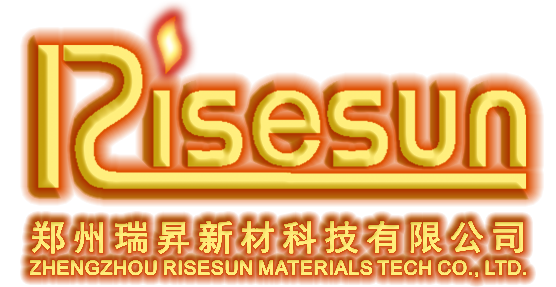11
2025
-
07
Why Choose Silicon Carbide Heating Elements for Your Industrial Applications?
Why Choose Silicon Carbide Heating Elements for Your Industrial Applications? Introduction to Silicon Carbide Heating Elements Silicon Carbide (SiC) heating elements are revolutionizing the industrial heating landscape by offering superior performance compared to traditional heating solutions. As industries evolve, the demand for efficient, durable, and cost-effective heating methods has never b
Why Choose Silicon Carbide Heating Elements for Your Industrial Applications?
Introduction to Silicon Carbide Heating Elements
Silicon Carbide (SiC) heating elements are revolutionizing the industrial heating landscape by offering superior performance compared to traditional heating solutions. As industries evolve, the demand for efficient, durable, and cost-effective heating methods has never been higher. This article delves into the unique properties of Silicon Carbide heating elements, outlining their numerous benefits and applications across various sectors.
Understanding the Composition of Silicon Carbide
Silicon Carbide is a compound made up of silicon and carbon atoms, engineered for extreme conditions. The combination of these elements results in a material renowned for its toughness and thermal stability. Silicon Carbide heating elements are typically produced through a sintering process that creates a dense and robust structure capable of withstanding high temperatures.
Key Properties of Silicon Carbide
1. **High Thermal Conductivity**: Silicon Carbide exhibits exceptional thermal conductivity, allowing for rapid heat transfer. This property is crucial in industrial applications where precise temperature control is necessary.
2. **Thermal Shock Resistance**: Unlike traditional heating elements, Silicon Carbide can endure sudden temperature changes without cracking or failing, making them ideal for dynamic heating environments.
3. **Corrosion Resistance**: Silicon Carbide is inherently resistant to oxidation and chemical corrosion, increasing its longevity in harsh environments.
4. **Electrical Conductivity**: This material maintains efficient electrical conductivity, which is essential for heating elements that rely on electrical resistance.
Advantages of Silicon Carbide Heating Elements
The adoption of Silicon Carbide heating elements offers several advantages that make them an excellent choice for industrial applications.
1. Enhanced Efficiency
Silicon Carbide heating elements operate at higher temperatures than their metal counterparts, which translates to increased energy efficiency. This efficiency not only reduces operational costs but also minimizes the environmental impact of industrial heating processes.
2. Longevity and Durability
The durability of Silicon Carbide heating elements is a game-changer for industries that require heavy-duty performance. These elements can last significantly longer than traditional materials, resulting in fewer replacements and reduced maintenance costs.
3. Cost-Effectiveness
While the initial investment in Silicon Carbide heating elements may be higher, the long-term savings associated with their efficiency and longevity make them a cost-effective solution. Industries can benefit from reduced energy bills and lower maintenance costs over time.
4. Versatile Applications
Silicon Carbide heating elements are highly versatile and can be utilized across various industries, including:
- **Semiconductors**: Used for high-temperature processes in semiconductor manufacturing.
- **Glass and Ceramics**: Ideal for applications requiring uniform heating and high thermal stability.
- **Metallurgy**: Essential in metal processing applications where extreme heat is needed.
- **Food Processing**: Effective for cooking and drying applications that require precise temperature control.
How Silicon Carbide Heating Elements Compare to Traditional Heating Elements
It's essential to understand how Silicon Carbide heating elements stack up against traditional materials like Kanthal or Nichrome.
1. Temperature Range
Silicon Carbide elements can operate at temperatures exceeding 1600°C, while traditional materials typically have a maximum threshold around 1200°C. This capability allows industries to execute processes that demand higher temperatures.
2. Response Time
Silicon Carbide heating elements have a faster response time due to their superior thermal conductivity. This characteristic is critical for applications requiring precise temperature adjustments.
3. Maintenance Requirements
Silicon Carbide heating elements require less maintenance than traditional heating solutions. The resilience to thermal shock and oxidation means fewer breakdowns and reduced downtime in industrial settings.
Installation and Maintenance of Silicon Carbide Heating Elements
Proper installation and maintenance are crucial for maximizing the lifespan and performance of Silicon Carbide heating elements.
1. Installation Guidelines
- **Ensure Proper Alignment**: Misalignment can lead to uneven heating and premature failure.
- **Use Compatible Kiln Furniture**: Use kiln furniture that can withstand high temperatures to support the heating elements.
- **Follow Manufacturer Instructions**: Adhere to specific guidelines provided by the manufacturer for optimal setup.
2. Maintenance Practices
- **Regular Inspections**: Conduct periodic inspections to check for signs of wear and tear.
- **Clean Components**: Keep components clean to ensure efficient heat transfer.
- **Monitor Performance**: Track temperature consistency and response times to identify any issues early on.
FAQs About Silicon Carbide Heating Elements
1. What industries primarily use Silicon Carbide heating elements?
Silicon Carbide heating elements are widely used in the semiconductor industry, glass and ceramics manufacturing, metallurgy, and food processing.
2. How do Silicon Carbide heating elements improve energy efficiency?
Due to their high thermal conductivity and ability to withstand higher temperatures, Silicon Carbide heating elements heat up quickly and operate efficiently, reducing energy consumption.
3. Are Silicon Carbide heating elements environmentally friendly?
Yes, their energy efficiency and longer lifespan contribute to lower carbon footprints, making them a more sustainable choice compared to traditional heating elements.
4. Can Silicon Carbide heating elements be used in vacuum environments?
Yes, Silicon Carbide elements are suitable for use in vacuum environments, making them ideal for specialized applications like semiconductor fabrication.
5. What is the typical lifespan of Silicon Carbide heating elements?
With proper installation and maintenance, Silicon Carbide heating elements can last significantly longer than traditional heating materials, often exceeding several years in demanding applications.
Conclusion
Silicon Carbide heating elements represent a crucial advancement in industrial heating technology. Their high efficiency, durability, and versatility make them an attractive option for various applications across multiple industries. By understanding the advantages and implementing best practices for installation and maintenance, businesses can significantly enhance their operational efficiency and reduce costs. As industries continue to evolve, Silicon Carbide heating elements will undoubtedly play a pivotal role in shaping the future of industrial heating solutions.



